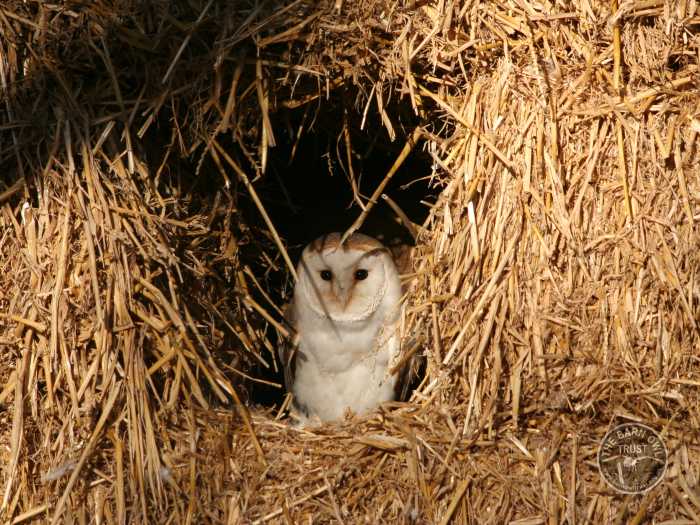Owls, those enigmatic denizens of the night, hold a potent allure. Their silent flight, piercing gaze, and haunting calls captivate our imaginations. But have you ever considered providing a haven for these magnificent creatures right in your own backyard? It’s more achievable than you might think, and the benefits extend far beyond mere aesthetic appeal.
Creating an owl-friendly habitat necessitates a paradigm shift. It requires moving beyond manicured lawns and embracing a more natural, less interventionist approach to land management. We must consider the ecological web of interconnectedness, the subtle dance between predator and prey that sustains these avian hunters.
Understanding the Owl’s Niche: A Primer
Before embarking on this endeavor, a foundational understanding of owl ecology is paramount. Different owl species exhibit distinct habitat preferences. Barn Owls, for instance, favor open grasslands and agricultural landscapes, while Great Horned Owls are more adaptable, inhabiting forests, woodlands, and even suburban areas. Barred Owls prefer mature forests near water sources.
The first step involves identifying which owl species are native to your region. Local ornithological societies and conservation organizations are invaluable resources for this information. Once you know your potential residents, you can tailor your habitat accordingly.
The Foundation: Cultivating a Thriving Prey Base
Owls are apex predators, meaning their survival hinges on a robust prey population. Voles, mice, rats, and other small rodents form the cornerstone of their diet. Therefore, creating an environment conducive to these creatures is crucial.
This translates into rethinking your approach to pest control. Eliminate or significantly reduce the use of rodenticides, as these toxins can bioaccumulate in owls, leading to debilitating health problems and even death. Embrace natural pest control methods, such as encouraging populations of snakes and other rodent predators.
Furthermore, consider creating areas of dense vegetation, such as native grasses and shrubs. These provide shelter and food for small mammals, effectively turning your yard into a veritable rodent buffet. Avoid excessive mowing and leaf removal, allowing leaf litter to accumulate and provide habitat for invertebrates, which in turn support rodent populations.
Providing Shelter: Nesting Sites and Roosting Perches
Owls require suitable nesting sites and roosting perches for resting and hunting. Natural cavities in mature trees are ideal nesting locations, but if these are absent, artificial nest boxes can be a viable alternative. The dimensions and placement of the nest box are crucial and species-specific. Research the requirements of the owl species you hope to attract and construct or purchase a nest box accordingly. Ensure the entrance hole faces away from prevailing winds and is protected from direct sunlight.
Roosting perches, such as tree branches, snags (standing dead trees), or strategically placed poles, provide owls with vantage points for hunting and observing their territory. These perches should offer a clear view of the surrounding area and be sturdy enough to support the weight of an owl.
Water: A Vital Resource Often Overlooked
While owls obtain much of their hydration from their prey, access to fresh water is still essential. A bird bath, a small pond, or even a shallow dish of water can provide a crucial source of hydration, especially during dry periods. Ensure the water source is kept clean and free of algae.
The Symphony of Silence: Minimizing Disturbances
Owls are sensitive to disturbances, particularly during nesting season. Minimize noise pollution by reducing outdoor lighting and refraining from loud activities near potential nesting sites. Cats are devastating to wildlife. Keep pet cats indoors, especially at night. Consider installing motion-activated lights that only illuminate when necessary, reducing light pollution and minimizing disruption to nocturnal wildlife.
Planting for Predators: Enhancing the Ecosystem
Selecting native plants that attract insects, which in turn support rodent populations, is a key element of creating a holistic owl habitat. Consider planting a variety of native grasses, wildflowers, and shrubs that provide food and shelter for a diverse range of prey species. Avoid using pesticides and herbicides, as these can harm beneficial insects and disrupt the food chain.
The Long Game: Patience and Observation
Attracting owls to your yard is not an overnight endeavor. It requires patience, persistence, and a willingness to observe and adapt. Monitor your property for signs of owl activity, such as pellets (regurgitated undigested bones and fur), feathers, or droppings. Adjust your habitat management practices based on your observations.
The rewards of creating an owl-friendly habitat are manifold. Beyond the intrinsic satisfaction of supporting these magnificent creatures, you’ll also benefit from natural pest control and the sheer joy of witnessing these silent hunters in their natural element. The transformation of your yard into a haven for owls is an investment in biodiversity, a testament to your commitment to conservation, and a profound connection to the natural world.
